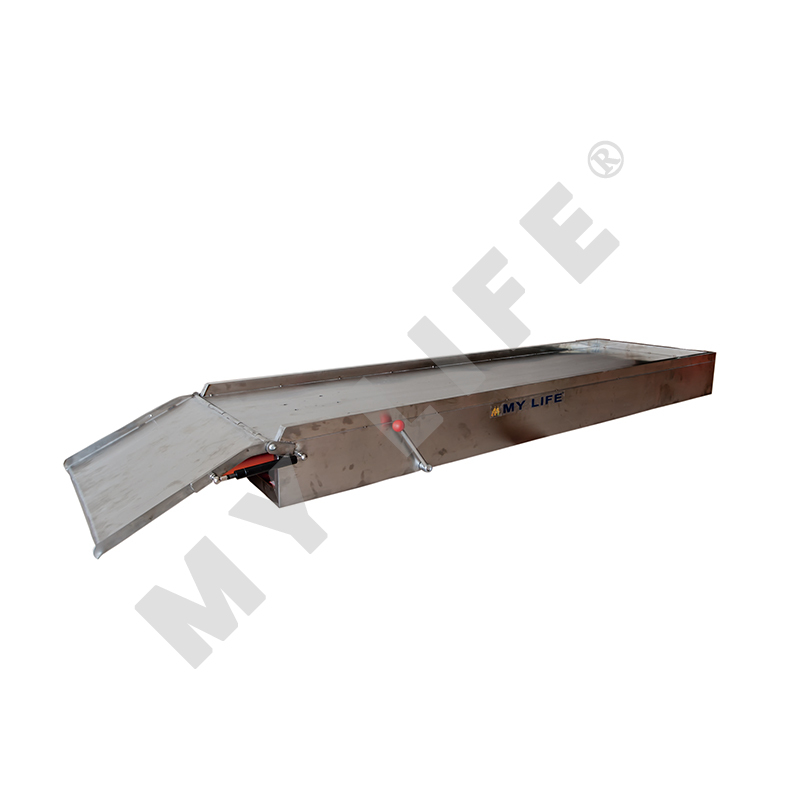A stretcher platform is a man-portable platform t
A stretcher platform is a device that can be used to transport patients in a hospital, or ambulance. They can also be used in sports and recreational events to transport injured players from the field to the medical facility.

There are various types of stretchers, designed for different scenarios, and can be fitted with patient restraints to help keep the patient safe. Using the correct stretcher minimises the chance of further injury, improving their recovery and survival.
Safety
In an ambulatory setting, the safety of patients is paramount. Stretchers need to be designed to ensure that they provide proper support, stability and positioning for patients.
A good emergency stretcher platform can be adjusted to various positions, including a flat position for patient transport, a seated position and a Trendelenburg position for medical procedures. These platforms also feature intuitive controls, so they're easy to use.
Loading and unloading a stretcher manually puts responders at risk for back injury. For this reason, look for a transport stretcher with hydraulics and electric power assist to help lower and raise the bed automatically.
The instant ambulance shock-absorbing platform for stretcher of claim 12 further comprises a hook and a hook support. The hook and the hook support are positioned and sized to admit each stretcher front leg when each of the stretcher front legs is disposed within a respective M bar recess, and the hook is slid into a hook closed position to entrap stretcher locking peg between hook and hook support.
Comfort
A Stretcher Platform is a bed that provides a safe and comfortable platform for patients during transport. These beds are often used in ambulances and hospitals.
A Stretcher Platform can be designed with different features to suit various situations. For example, one type of Stretcher Platform can have an adjustable foot and head section.
This feature makes it easy for responders to secure a patient and move them down sets of stairs or around narrow areas. It also helps reduce the risk of workplace strain and injury for the responding team.
A Stretcher Platform can be equipped with a variety of other features to ensure maximum safety and comfort for the patient. This can include an X-ray platform, antibacterial materials, and memory foam construction.
Ease of Use
A Stretcher Platform is an essential component for medical facilities and emergency responders that want to safely and comfortably transport patients. They are lightweight and easy to maneuver, making them a cost-effective option.
A stretcher platform can be used in a variety of settings, including hospital rooms, construction sites and sports and recreational events. They also make it easier for emergency responders to safely transport patients in confined spaces, such as narrow hallways.
One feature that can help make the transportation process easier is an adjustable foot and head section. This is especially helpful for those situations where a patient needs to sit up during transport, instead of lying down.
This allows ambulance responders to quickly secure a patient to the stretcher, and transport them down sets of stairs or around a tight area without sacrificing mobility or the lightweight frame. It also makes it easier to get a patient in and out of an elevator.
Portability
Emergency medical services use a variety of stretchers for different tasks, such as rescues in confined spaces, vertical lifting of an injured person, or traversing rough terrain. For this reason, they need a lightweight and highly portable platform that can be erected quickly and easily.
A stretcher platform is a man-portable platform that can be used to support the patient, provide a workspace for doctors, and provide medical monitoring and treatment equipment. It can be erected from its fully folded position to its operational position within about 60 seconds or less.
Typically, a stretcher is secured to an ambulance by attaching it from the left and right sides of the vehicle. This allows the operator to move the patient up and down the stairs or into the operating room.
In order to facilitate transport of the patient, the platform may be able to fold into an open orientation. This orientation is useful when the patient needs to be transported on a flight of stairs or other similar obstacles. It can also be positioned over the top of the ambulance.

 英语
英语 中文简体
中文简体






